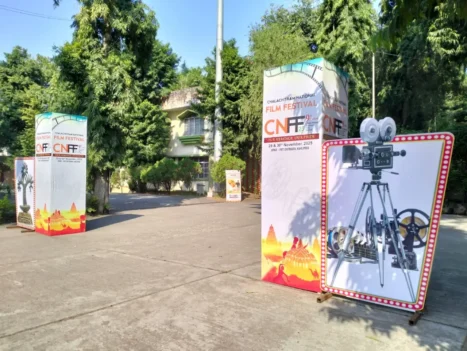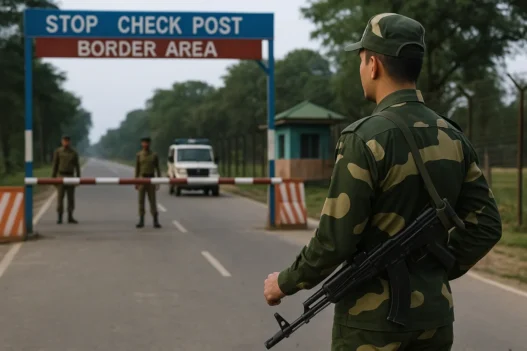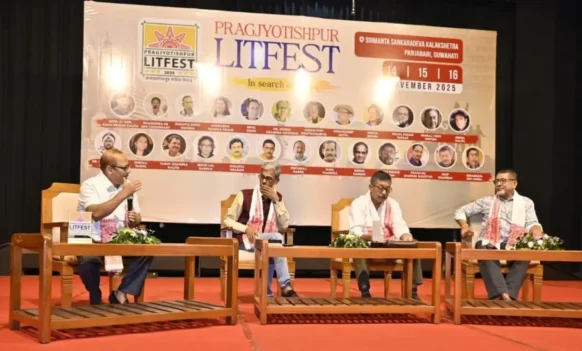James Muante, a young agripreneur from Mizoram, had always dreamed of the day when his prized king chillies could reach Guwahati’s bustling markets on the same day they were harvested. In his imagination, dawn would see him loading crates of the fiery red produce, by noon they’d be sealed in a freight coach, and by evening, his WhatsApp would be buzzing with fresh orders from enthusiastic buyers. That dream, once hampered by Mizoram’s isolation and winding mountain roads, is now poised to become a tangible reality.
This dream rests on the steel tracks of the new Bairabi–Sairang rail line, which, for the first time, links Mizoram’s capital, Aizawl, to India’s vast railway network. The Northeast Frontier Railway (NFR) conducted a successful trial run on May 1, marking a watershed moment in the state’s history. Aizawl now joins Guwahati, Agartala, and Itanagar as the fourth capital city in the Northeast to be integrated into the national rail system. The line stretches 51.38 kilometres from Bairabi—previously the state’s only railhead—to Sairang, a town just 20 km from Aizawl.
The final stretch from Hortoki to Sairang, measuring 33.86 km, has recently been granted safety clearance by the Commissioner of Railway Safety (CRS) after rigorous inspections and speed trials. With clearance to run at speeds of up to 90 km/h, the railway is now ready to transform not only the way people move, but also how goods, services, and opportunities flow through Mizoram. The Ministry of Railways reports that the project is nearly complete, with over 94.5% physical progress and 97% financial progress. Constructed at a revised cost of Rs 5,021.45 crore, the railway overcame enormous engineering challenges in one of India’s most rugged terrains.
This was no ordinary railway build. According to available reports from the Ministry of railways the line involved the construction of 32 tunnels, 35 major bridges, and numerous smaller bridges, overpasses, and underpasses. Among its standout achievements is a bridge towering 104 metres high—taller than Delhi’s Qutub Minar. The result is not merely a railway but a feat of civil engineering that brings one of India’s most remote states closer to the heart of the nation.
For Mizoram, which has long grappled with geographical isolation, this connection is nothing short of transformative. The winding mountain roads that once turned simple journeys into arduous multi-day affairs will soon give way to smooth train rides. “What once took days over winding mountain roads can now be done in just hours,” says Sangmuan, a local scholar. With the Aizawl-Assam travel time drastically cut, even a weekend trip home or a visit to a distant hospital will no longer be a logistical nightmare.
The economic potential unleashed by this connectivity is immense. For farmers like James Muante, the railway offers a chance to expand market reach, reduce spoilage, and lower transport costs. Perishables such as bamboo shoots, king chillies, and seasonal fruits can now be transported in refrigerated containers, slashing wastage and boosting profits. As rail freight is generally cheaper than road transport, prices for essential goods, fuel, and construction materials are expected to fall by 10-20%, easing the cost of living across the state.
This connectivity is also a lifeline for local artisans and small-scale industries. Ujjal Borah, a tourism promoter from Tezpur, believes that weavers, carpenters, and craftsmen from villages like Kawnpui and Mualkhang will now be able to reach bigger markets in Guwahati and Kolkata with ease. “Local businesses will get a lift,” he says. For many entrepreneurs in Mizoram’s hill towns and villages, the railway is a bridge to new income streams.
Tourism, too, is set for a renaissance. With rail access, Aizawl will now feature prominently on travel maps. Borah envisions the city as a base for adventure tourism—treks to Reiek, bird-watching expeditions in Dampa Sanctuary, and vibrant festivals like Chapchar Kut will become magnets for domestic and international visitors. For the first time, the journey to Mizoram won’t be a deterrent but a scenic prelude to discovery.
Even more profound are the potential social impacts. Health and educational equity will improve as rural populations gain better access to Aizawl’s hospitals and universities. “Schools that once struggled to attract teachers due to transport woes will now be able to bring in talent from cities like Shillong and Silchar,” says James, reflecting on how his own village school often operated without science teachers for months. The rail line promises to change this.
Employment opportunities, both direct and indirect, are set to rise. Station operations, logistics, maintenance, and hospitality services along the rail corridor will generate new jobs. The Mizoram government is also pushing for local youth to be employed in parcel services and ticketing counters, integrating development with empowerment.
But perhaps the most visionary aspect of this railway lies beyond national borders. The Bairabi-Sairang line is more than a domestic transport link—it’s a vital segment of India’s “Act East” policy. It aligns with broader regional strategies like the Kaladan multimodal project, which seeks to connect India’s Northeast with Southeast Asia via Myanmar. For Mizoram, this railway could be the first step in becoming a gateway to regional trade and cultural exchange.
As the CRS clearance is now secured and the Ministry of Railways prepares for formal inauguration, the people of Mizoram wait with a quiet hope. This rail line represents more than just movement—it symbolizes belonging, progress, and recognition. In a state where hills once isolated, steel rails now unite.
For James Muante and millions of others in Mizoram, the railway is not just a promise of speed or convenience. It is a declaration that they, too, are on the map. That their produce, culture, dreams, and voices matter. And that at last, after decades of longing, Mizoram is not just connected by track—it is connected by purpose.







